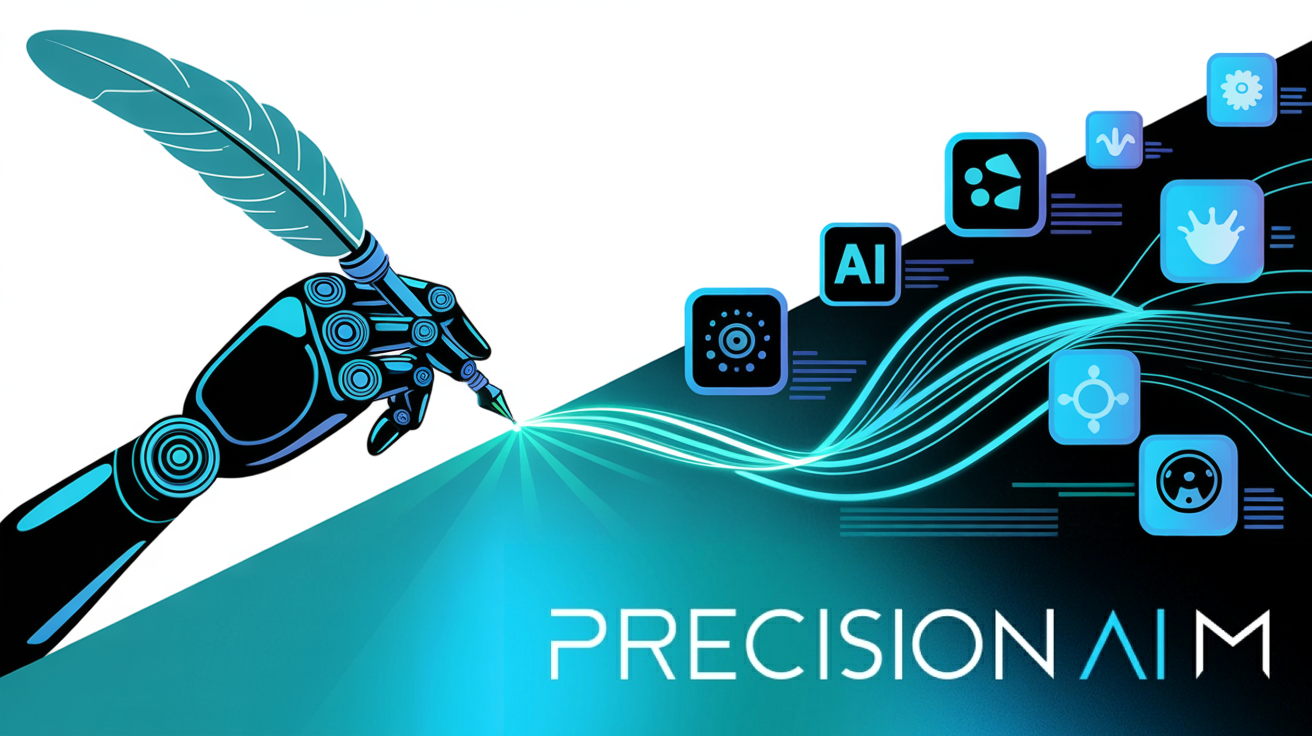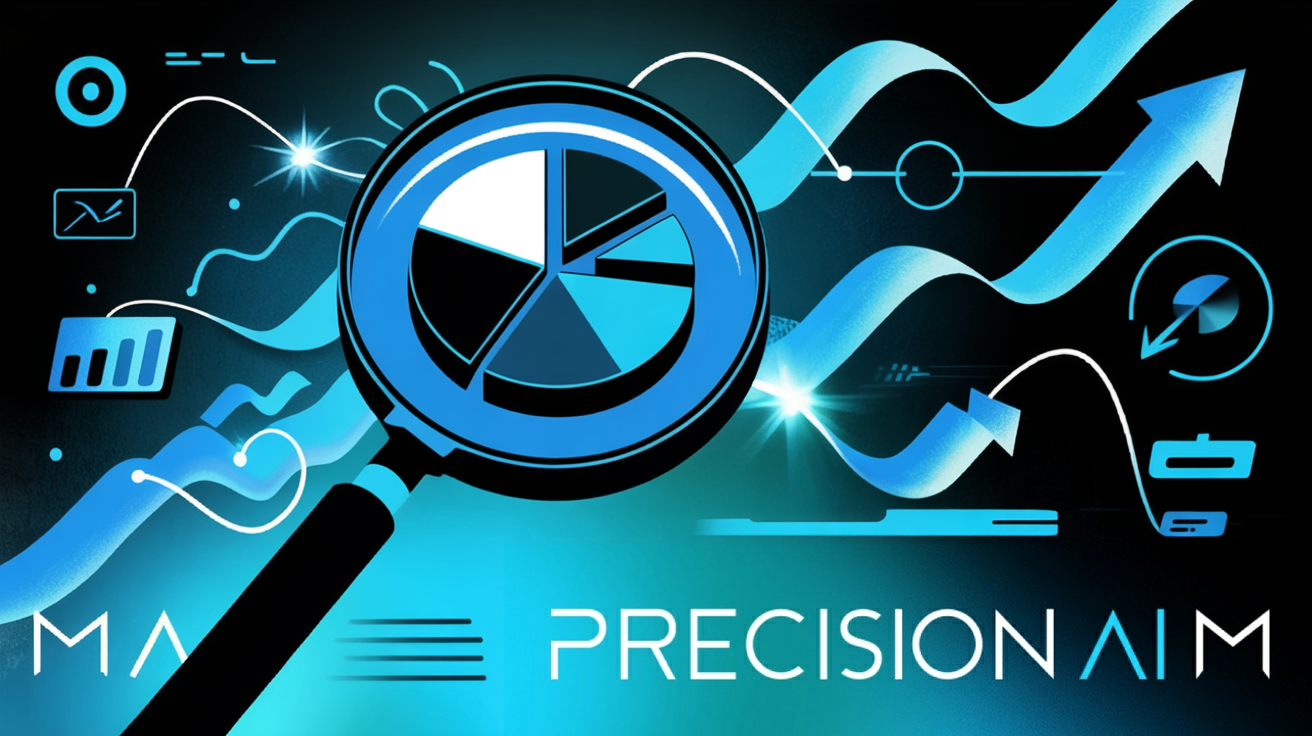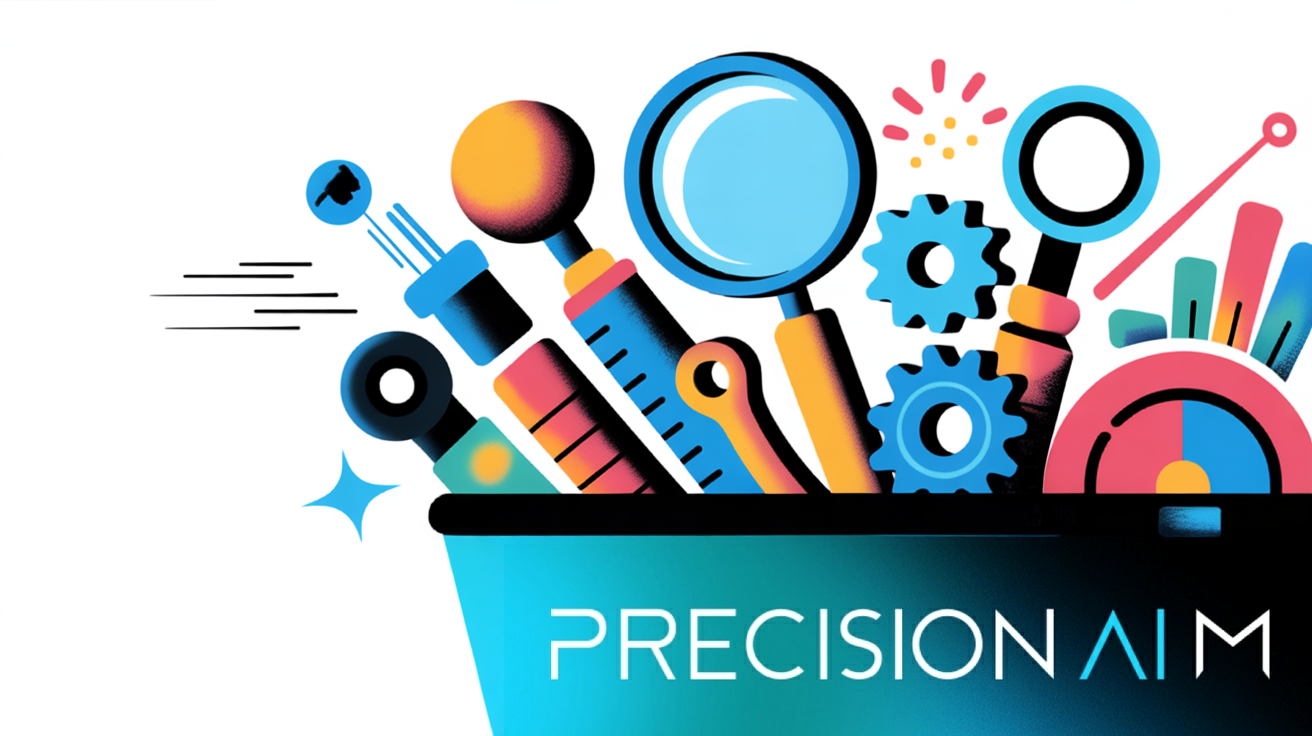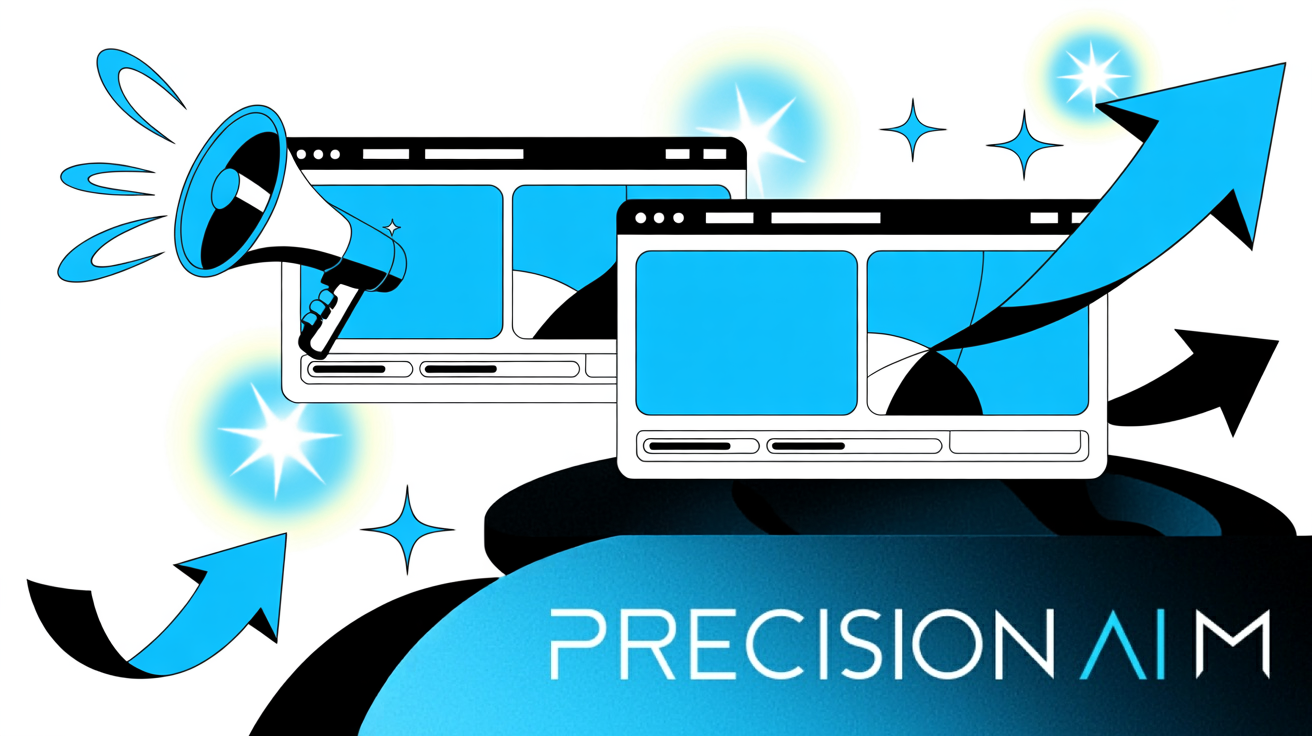Producing high-quality content at scale used to mean endless spreadsheets, ballooning budgets, and a constant scramble to keep up with search engine demands. Now, AI writing tools have changed the equation, promising faster output and smarter workflows—but they bring new challenges, too.
I've seen teams struggle to balance speed with originality, and worry about losing their brand's unique voice as automation ramps up. If you're facing these issues, you're not alone—most marketers are wrestling with the same questions right now.
In this guide, I'll break down what content at scale really means today, tracing its evolution from manual processes to AI-powered automation. You'll get a clear look at the latest AI writing platforms, how detection tools work, and why both are essential for quality and compliance.
I'll also share practical steps for choosing the right tools, optimising your workflow, and staying on the right side of search engine guidelines. By the end, you'll know how to scale your content without sacrificing trust, originality, or results.
What is content at scale?
Definition and historical evolution of content at scale
Let’s get right to it: content at scale means reliably producing large amounts of relevant, high-quality content—fast and efficiently. In today’s fierce online world, this isn’t just a nice-to-have. It’s the bedrock of staying visible, attracting audiences, and holding onto vital competitive ground.
Looking back, scaling content was never this slick. Businesses simply grew their writing teams, relied on a steady stream of freelance contributors, and juggled endless editorial schedules, often with nothing more than spreadsheets and basic content platforms for support. It was as painstaking as it sounds, each extra article a mini project in itself.
But things accelerated the moment search engines stepped up their expectations. Suddenly, it was clear: if you wanted to win at SEO, you had to keep your website packed with freshly published, varied content. This pressure pushed brands to publish more often, and across a wider range of topics, just to keep up with evolving ranking algorithms. Scheduling tools and keyword planners became early allies, automating the repetitive admin work, though, at this stage, the actual writing remained purely human-driven.
Early adopters of AI in content marketing are augmenting their creative teams, not replacing them. The new workflow involves humans guiding AI, curating its output, and adding the final layer of brand voice and emotional nuance.
Then came the real watershed moment—the rise of AI-powered automation. By 2025, the majority of marketing teams had AI on their side for every stage of the process, from brainstorming topics to polishing the final draft. These AI-driven workflows didn’t just make things quicker—they made them vastly more productive, letting brands multiply their content with fewer people and tighter budgets. The sheer explosion in generative AI investment around the world says it all. Netflix, for example, now uses AI for recommendations and for automatically generating show summaries. That leap didn’t just boost efficiency—it sent their content output through the roof.
Why content at scale matters for marketers and brands
Now, you might be wondering—why does scaling content really matter? The answer is simple: visibility. Search engines reward fresh, authoritative content, and brands able to deliver this regularly climb up the rankings, capturing more of that precious organic traffic. Today’s algorithms are hungry for depth, diversity and momentum, so consistency and coverage shape digital winners.
A broad content library also builds trust and authority in your niche. It means you’re prepared to answer varied audience questions, supporting people as they move through the buying journey. Teams using automation for scale usually see better engagement and more impressive returns on their investment than manual efforts allow.
But scaling is never entirely risk-free. Ramp up production without proper care and you risk losing your unique voice, publishing lower-grade material or accidentally repeating topics. Thin or duplicate content diminishes brand trust and can even cause search penalties. Rigorous editorial processes, rock-solid guidelines, and constant quality checks are essential tools to guard against these pitfalls.
Overview of the AI-driven landscape
Today, AI-powered writing platforms like SEOSwarm and its competitors have moved to centre stage. They now automate much of the busywork: research, outline creation, and drafting, giving human teams time to focus on creative and strategic tasks instead. Brands tapping into these tools push content out faster, more affordably, and with tangible jumps in engagement.
With more AI-crafted content circulating, detection tools have also become crucial. These clever systems watch for patterns in sentence structure, syntax, and telltale signs like perplexity and burstiness. Some even embed subtle, invisible tags within the text, making it possible to verify its AI origin behind the scenes. The point? To protect your content’s originality and preserve editorial standards—crucial as the digital landscape grows noisier by the day.
There’s a genuine back-and-forth here. As writing technology improves, detection systems adapt in tandem. Content leads must review their workflows regularly, upgrading their toolkits and responding swiftly to every new twist.
So, in this era, AI isn’t just a tool—it’s the engine powering a shift in how teams operate: from repetitive tasks to strategic oversight and innovation. Marketers who prioritise adaptable workflows, regular training, and tight quality control are the ones best placed to thrive, as content at scale becomes both their challenge and their greatest advantage.
How AI writing tools enable content at scale
Core technologies and variations of AI writers
Let’s pull back the curtain on how AI writing tools really tick. At their core are large language models (LLMs): ultra-sophisticated computer programmes that devour massive datasets—books, articles, websites—almost anything with words. When they say “large,” they mean it. These systems are trained on millions or billions of parameters, soaking up more than any one person ever could.
The scale of language models has increased dramatically, with prominent examples including OpenAI’s GPT-3 (175 billion parameters), DeepMind’s Gopher (280 billion parameters), and Google’s PaLM (540 billion parameters).
This staggering scale is exactly what makes them so effective at their jobs. LLMs recognise subtle patterns in language, echoing real conversation to generate content that feels surprisingly natural. The generalist LLMs powering today’s popular AI writers—like OpenAI’s GPT or Google’s PaLM—are digital Swiss Army knives. They shine at creating blog posts, product blurbs, outreach emails, and plenty more.
But here’s the thing—not everyone wants a generalist. Some businesses require deeper, targeted expertise. That’s why fine-tuned, specialist LLMs exist. These variants are adapted with industry-specific data—medical records, legal files, or technical manuals—so they deliver deeper reliability and real detail whenever specialist knowledge is crucial.
So what really sets the best models apart? It’s the quality and diversity of their training data. Feed them factual, reputable sources and you’ll see stronger, more accurate results. If there's biased or unreliable content in the mix, that seeps through—and you might spot awkward tone or shaky facts in finished outputs. It’s a bit like training someone new: whoever their mentors are, that shapes their skills.
AI writers aren’t just text factories. Their generative capabilities let you set the rules—structure, length, tone, even down to format. You can ask for a formal whitepaper or a snappy, playful blog intro. This remarkable agility is where the magic really happens. One content team can whip up everything from technical guides to social posts, all at scale, and all tailored specifically to the task at hand.
Platforms like SEOSwarm make all this power accessible with intuitive interfaces. Users simply adjust their prompts and brief settings, tailoring every output to a particular campaign, audience, or brand requirement. Long-form, evidence-based article? Light-hearted explainer? It’s all achievable—without compromising on consistency, quality, or brand voice.
According to a 2025 enterprise AI adoption report, 73% of companies are spending at least $1 million a year on generative AI, yet only a third of them are seeing any real payoff.
This is what truly unlocks content at scale. AI writing tools deliver a flexible, hyper-efficient content engine that traditional methods could never match—and honestly, they’re just getting started.
Understanding AI detection tools and their role in scalable content
Types of AI detection: plagiarism, authorship, and originality
Keeping content original and correctly attributed becomes critical once you start producing at scale. Originality and clear author attribution aren’t just box-ticking—they protect your brand and legally shield your business. But as your volume rises, so do the risks.
Just a single case of duplicated text or an unexpected switch in writing style can harm audience trust or even trigger those dreaded penalties from search engines. That’s why AI detection tools have become absolutely essential in high-speed, high-volume content environments.
There are three core types of detection these tools deliver:
- Plagiarism Detection
Scans the web for duplication, flagging content that could cause copyright problems. - Authorship Analysis
Picks out unexpected writing style changes to keep your editorial voice consistent. - Originality Testing
Identifies whether content is human, AI, or blended—sometimes flagging down to individual sentences.
By combining these safeguards, large content teams cut copyright risk and uphold editorial quality. This is particularly vital as automation rises and manual review becomes unworkable on massive workloads.
How leading tools operate
So what sets apart the big names like GPTZero, ZeroGPT, Winston AI and Willie.ai? Each uses their own blend of clever techniques to examine your content:
- Perplexity
Checks how unpredictable or 'random' the text is—ultra-predictable content often hints at AI generation. - Burstiness
Looks at variation in sentence structure; human writers are usually more varied than machines.
For example, GPTZero homes in on stylistic oddities. Winston AI gives a sentence-level risk map. Platforms like ZeroGPT and Willie.ai assign overall AI scores to a document.
Some highlight entire documents, others pinpoint problem passages—speeding up the review process for editors. Still, no tool is totally foolproof. Complex drafts, especially those mixing AI and human edits, demand editorial review. So, detection tools always work best when paired with human insight.
Comparing detection methods for human, AI, and mixed content
Most advanced platforms now blend linguistic analysis with machine learning and example-based referencing. This produces a granular map of risks, helping editors target genuine problem spots without getting bogged down in noise.
Editorial teams rarely stick to a single solution. The norm is to cross-check findings from several tools, which helps avoid false positives. If one tool flags a section but another doesn’t, editors dig deeper to get clarity.
This layered approach is the linchpin—preserving both content quality and authenticity, even as your content output surges. Wondering whether all these checks slow things down? With smart systems and well-trained editors, scalable publishing becomes not just safer, but more efficient than ever.
Key benefits and drawbacks of scaling content with AI-powered tools
The Upside: Speed, Cost, and Unmatched Efficiency
AI-driven content tools genuinely transform how digital teams operate. Imagine drafting articles, building outlines, and scheduling posts—all accomplished in minutes rather than hours.
For small or stretched teams, this means meeting ambitious targets without stressful late-night writing sprints or an overreliance on expensive freelancers. One midsize agency, after introducing an AI assistant, saw its monthly blog count quadruple while each post took less time. The real-world payoff? Organic traffic climbed, engagement numbers rose, and search rankings finally nudged upward. Less stress, better results.
Efficiency doesn’t stop with text generation. Through batch scheduling and slick repurposing, one high-impact blog post quickly becomes several emails or a set of social snippets. That puts every great idea to work—vital when budgets tighten and you need to squeeze full value from existing resources.
Consistency on Autopilot—and Personalisation at Scale
Brand trust depends on consistent, polished messaging. AI helps here by embedding your editorial standards—tone, rules, even signature phrases—across every output.
If your content spans multiple audiences or regions, many AI tools allow for customisation via prompts. Platforms like SEOSwarm add ready-made templates and evolving style guides, enforcing your unique standards no matter how tight the turnarounds or how dispersed the team. This takes frantic, last-minute fixes off the table. Each piece fits, every voice sounds true—even with volume ramping up.
How Specialised Platforms Like SEOSwarm Elevate Both Speed and Quality
Specialist tools do more than save time—they master workflow integration. SEOSwarm goes further, weaving originality checks, readability assessments, and compliance prompts straight into live drafts.
On top of that, built-in SEO optimisation and schema tools help ensure each post is discoverable and search-friendly before you hit publish. Editors draft, improve, and push content live—all from the same dashboard. The end result? True confidence that output meets brand, legal, and technical standards—with no extra juggling between apps.
Their “blog in one minute” approach genuinely isn’t hype. High-output teams really are seeing this level of productivity, especially when the stakes are both speed and authority.
Key Benefits at a Glance
- Rapid Drafting
Instantly generate articles, outlines, and schedules to meet frequent posting targets. - Cost Efficiency
Minimises the need for large writing teams or expensive outsourcing. - Personalised Campaigns
Customises content for each region or audience while keeping messaging consistent. - Quality Assurance
Tracks originality, compliance, and SEO quality—built straight into your working process. - All-in-One Publishing
Centralised platform is perfect for agencies or brands managing multiple projects.
By automating the repetitive legwork, AI lets human creators focus on real strategy, creative ideas, and specialist input. This is what finally unlocks the full power of content at scale: faster, sharper, more sustainable, and—perhaps most importantly—never at the expense of quality.

AI-Powered Content Strategy
See the AI platform that's replacing entire content teams (with better results).

Recent developments in AI writing and detection tools
Breakthroughs in AI detection technologies
AI detection technology has undergone a growth spurt, racing to keep pace with each advance in generative content platforms. Tools such as Winston AI, GPTZero, and ZeroGPT are now essential kit for any content team working at scale.
These solutions now boast stronger accuracy, bulk-scanning, and smooth workflow integration—features that matter when your publishing volume shoots up.
- Advancements of Major Detection Tools
Winston AI, GPTZero, and ZeroGPT now deliver sharper risk scoring, bulk checks, and rapid assessments. - Multimodal and Multilingual Detection
Winston AI examines text, images, deepfakes, and multiple languages—including advanced batch uploads for large-scale review. - Workflow Integration and User Experience
Chrome extensions and quick dashboards let teams audit sprawling libraries in seconds.
Comparative Strengths and Gaps
There’s no outright winner—each tool has its own highlight. GPTZero is all about sentence-level precision. ZeroGPT excels at bulk scanning. Winston leads with multimodal review.
But here’s the thing—detecting fully paraphrased or hybrid (human plus AI) content is still a major challenge. This is where current systems are, admittedly, less robust.
- Stagnation of Willie.ai
Missing out on new tech and integration options, it's quickly lagging behind key competitors. - Impact for Content Teams
These new tools allow for regular audits and swift risk detection, supporting both editorial quality and compliance needs.
Changes in Google and industry guidelines
Google has changed tack—right now, their biggest priority is content quality and usefulness, whatever the author’s origin.
Everything comes back to original value and robust technical basics.
- 2024–2025 Google 'Helpful Content' Updates
Backs “content for people,” meaning quality AI and human writing have equal standing. - Manual Actions and Penalty Landscape
Now targets manipulative or low-value content, regardless of its source. - E-E-A-T and Originality Emphasis
Experience, Expertise, Authority, and Trust are non-negotiable for every post. - Compliance and Technical Requirements
Schema, web vitals, and SEO must be strong—but quality and trust are what set you apart. - Publisher and Brand Response
Brands are clearing out weak or duplicate content, shifting towards richer, context-driven work.
Industry response: Best practice shifts and hybrid workflows
So, what’s changed in day-to-day publishing? The most successful teams are now weaving together AI-generated drafts with expert human review—and running detection checks before hitting publish. This hybrid approach lets you scale quickly, but never at the expense of authority or trust.
Core challenges in creating and managing content at scale
Maintaining originality and avoiding detection
So, you’re pushing out content at scale—great. But here’s the thing: keeping that output genuinely original, and making it feel authentically human, gets tricky fast.
Too much reliance on default AI settings, standard prompts, or out-of-the-box templates, and suddenly your articles start looking eerily familiar. It’s called content homogenisation—and for brands hoping to make an impression, it’s anything but harmless.
Think about it: if every piece starts echoing the same structure, the same tired intros, your brand voice fades into the background. No spark. No distinctiveness. And honestly, it gets harder for readers to connect, let alone remember you or stay loyal.
But the risk isn’t just a forgettable blog roll. As AI detection tools sharpen up and search engines now demand real, original insights, predictable and artificial-sounding writing can bring real trouble. Sites get flagged, rankings slip away, and you might even see content taken down.
What’s worse, readers aren’t fooled—bland, impersonal writing makes them click away. Trust drops the moment your audience sniffs out that tired, manufactured feel.
Search engines punish this, too. If your articles don’t deliver fresh value, you could be side-lined or penalised for offering nothing new. Audiences, meanwhile, increasingly want voices that sound like they actually care—packed with real insights and genuine perspective.
So, what can you do to sidestep the homogenisation trap while still harnessing AI speed and convenience? Start with strong prompt engineering—give your AI detailed, context-rich directions.
Mix things up: switch templates, vary tones, insert up-to-date brand language or in-house data wherever you can. Editorial review is the secret weapon here.
Let human editors hunt down the generic fluff and inject the brand’s personality. The real secret? This tight partnership between human oversight and automated draft is what keeps your content lively and unique.
Experienced editors act as that final filter—they spot anything repetitive, restore your brand’s voice, and make sure cultural context is spot on.
Routine reviews for tone, originality, and relevance ensure you deliver something fresh, every time. Originality at scale isn’t about ditching automation—it’s about guiding it, with a human touch every step of the way.
Search engine guidelines and compliance for scaled content
What current guidelines require (Google, other engines)
Let’s set the record straight: search engines like Google have moved beyond a blanket suspicion of AI-generated content. What they truly want now is genuine value and real-world relevance, regardless of whether the content starts with AI or a human hand.
If your article shares unique insights and helps the reader, you’re ticking the box that matters most.
It’s a subtle shift, but it means your approach must focus less on word count and more on what’s genuinely useful or thought-provoking for your audience. Thanks to Google’s “Helpful Content” updates, originality isn’t just preferred—it's essential. The focus now is on actionable advice, depth, and an unmistakable stamp of your own expertise.
Pure output volume alone no longer impresses. Instead, consistent quality across the site is what wins authority points and keeps your visibility strong.
There’s another rising standard: Experience, Expertise, Authority, and Trustworthiness (EEAT) now carry real weight with algorithms. Think clear author bios, external citations, robust schema markup, and transparency wherever AI lends a hand. Openness and accountability are expected, with visible bylines and structured metadata to show that a human editor has taken responsibility.
Slip here, and the penalties bite—your content might be pushed down or deindexed before you notice.
Avoiding penalties when scaling with AI
Ramping up with automation has its risks. Output that’s thin, formulaic, or lacking a visible human touch raises red flags instantly—search engines are primed for it.
- Penalty Triggers
Thin pages, lack of originality, missing author info, repetitive structures, minimal editorial checks.
The real safety net is a hybrid editorial workflow, blending the efficiency of AI with human subject matter expertise. Editors step in to check facts, confirm tone, document edits, and flag issues before publication. Regular compliance audits seal the deal, proving you’re both flexible and robust as standards keep evolving.
Compliance standards and best practices at a glance
| Best Practice | Compliance Requirement (2024–25) |
|---|---|
| Content Quality | Unique value, depth, actionable insights |
| EEAT Signals | Verified authors, robust sources, schema applied |
| Editorial Oversight | Human review before publication |
| Transparency | Authorship, AI usage disclosed |
Stick to these principles and your scaled content stays visible, trusted, and futureproof—no matter how quickly you ramp up your editorial engine.
AI-powered workflow transformation: A marketing team case study
Marketing workflow before and after AI tool adoption
Let’s rewind for a moment. Before AI entered the scene, large marketing campaigns—think launches with hundreds of products—were painstakingly manual. Writers drafted, editors reviewed, compliance double-checked, and localisation adapted each item for different markets. Every handover introduced a bottleneck.
Add endless email threads and timely approvals, and it’s no surprise delays and fluctuating quality became the norm. Dependence on costly freelancers only made budgets wobblier.
Now comes the game-changer: AI-powered platforms like Jasper AI. Teamwork shifts onto a secure central workspace. Drafts generate in seconds, leaving specialists free for creativity, compliance, and analytics—no longer stuck on the copy treadmill.
The real transformation? Multiple regions can localise, review, and refine content all at once. That’s how turnaround time on campaigns plummeted by as much as 99%, external costs halved, and every piece finally matched the brand’s voice.
Key lessons and implications for agencies and brands
So, how do other agencies and brands catch up? Early leadership backing and cross-team pilots matter. Testing small projects first lets you adapt workflows before diving in.
AI strips out repetitive tasks, so your experts contribute higher-value ideas. With good documentation and flexible process, brand tone and compliance standards stick firmly—even as speed climbs.
And the upshot? AI-driven workflows foster happier teams, smoother collaboration, and real agility. That’s your new competitive edge: quality, consistency, and the ability to seize every market opportunity, fast.
Practical steps for leveraging AI tools in scalable content production
Evaluating and selecting the right tools
Choosing the right AI content tools starts with a sharp sense of your goals and workflow. There’s a wealth of options—from all-in-one solutions like SEOSwarm, which package strategy, writing and SEO optimisation, to specialist detectors such as GPTZero and Winston AI.
For meaningful comparisons, focus on the essentials: can the tool support your variety of content needs—long-form, creative, multilingual? Are analytics and dashboard navigation straightforward? Built-in detection and compliance features are crucial for fast-paced, risk-sensitive teams.
The best test? Pilot these tools in a real campaign. Does it mesh with your CMS? How’s the quality and speed?
Blog-in-one-minute
Add a fully SEO-optimised blog to your website with just 2 lines of code.
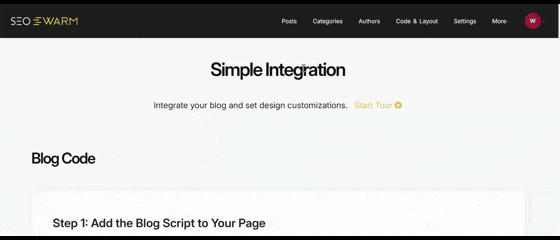
Seamless integration with analytics and compliance tools is a must. If your organisation’s evolving, favour modular design and open APIs—saving future headaches as your requirements shift.
Optimising integration and workflow
Adopting AI well is as much about people as software. Get all the right teams (editorial, marketing, compliance) involved early. Nail down objectives and support everyone with hands-on training.
Roll out changes in phases, using feedback to tweak as you go. Hybrid workflows let AI cover repetitive drafts and compliance, while editors perfect high-stakes or regulated material.
Safeguard quality by centralising operations, keeping clear audit trails, managing versions, and running regular originality reviews. These systems underpin scalable quality.
Budgeting and ROI: Balancing cost, risk, and outcome
Cost isn’t just about the licence. Count onboarding, training, process tweaks, and likely upgrades too. AI platforms usually cut turnaround and outsourcing expenses, boosting output and engagement.
Pin down ROI metrics: track speed, asset volume, engagement, and compliance. Avoid platforms that lock you in—opt for modular features and easy migration. Regularly re-evaluate tools and strategy to keep aligned with industry shifts and meet evolving business needs.
Making Content at Scale Truly Stand Out
Speed alone won’t win the content race—originality and trust are now the real differentiators. AI writing and detection tools can help you scale, but only if you pair them with sharp editorial oversight and a clear sense of your brand’s voice.
Here’s my advice: treat your workflow as a living system. Regularly review your AI and detection tools, train your team to spot generic output, and always layer in human insight before hitting publish. If you’re serious about scaling, invest in platforms that centralise quality control, compliance, and analytics—then pilot, measure, and refine as you grow.
The brands that thrive aren’t just producing more—they’re producing better, with every tool and process working in sync. In the end, sustainable scale is about building trust at every touchpoint, not just filling the page. — Wil
